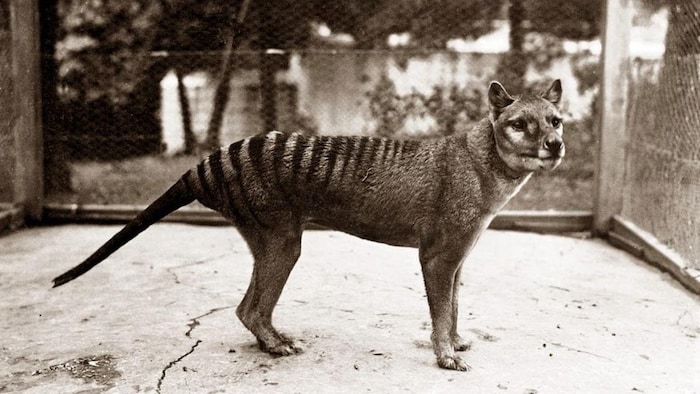Open in full screen mode The last Tasmanian tiger died at Beaumaris Zoo in Hobart, Australia, on September 7, 1936. Agence France-Presse Feature in trial Log inCreate my account Speech synthesis, based on artificial intelligence, makes it possible to generate spoken text from written text. Norwegian scientists claim to have succeeded, for the first time, in recovering ribonucleic acid (RNA) from an extinct species, the Tasmanian tiger . Never has the RNA of an extinct species been extracted and sequenced, told AFP Love Dalén, professor of evolutionary genetics at Stockholm University, who co-led the project. The ability to recover RNA from extinct species is a first step towards the possible possibility of resurrecting extinct species. A quote from Love Dalén, professor of evolutionary genetics Professor Dalén and his team successfully sequenced RNA from a 130-year-old Tasmanian tiger specimen held by the Swedish Museum of Natural History. They were thus able to reconstitute the RNA from the animal's muscles and skin.
The Tasmanian tiger specimen used in the study. It is stored at room temperature at the Swedish Museum of Natural History.
RNA is a molecule that allows expression of genetic code in each cell and thus give it instructions for action.
The sequences recovered were of such quality that it was possible to identify RNAs coding for proteins specific to muscles and skin, the researchers indicate in a press release.
< blockquote class="Wrapper-sc-2357a233-0 FqMAW">
If we want to resurrect an extinct animal, we need to know where the genes are, what they do and in which tissues they are regulated.
A quote from Love Dalén, professor of evolutionary genetics
The last Tasmanian tiger, a carnivorous marsupial, died in captivity in 1936 in Tasmania (southern Australia).
After European colonization of Australia, the animal was declared a pest and a reward was offered for each animal killed.
The researchers' findings will have implications for the study of RNA viruses. Many pandemics have been caused by RNA viruses, such as the coronavirus recently or the Spanish flu previously, Love Dalén said.
We could look for these viruses in the remains of preserved wild animals in the dried specimens of the museum. This could help understand the nature and origin of pandemics.
A quote from Love Dalén, professor of evolutionary genetics
For Daniela Kalthoff, head of the mammal collection at the Natural History Museum, this opens the way for further research into the exciting idea of a resurrection of the Tasmanian tiger.
Researchers are also considering the possibility of #x27;expand RNA recovery to collections in other museums around the world.
There are millions and millions of dried skins and tissues of insects, mammals and birds in the collections museums around the world, and we could recover the RNA from all these specimens, says Professor Dalén.
Details of this work are published in the journal Genome Research (New window) (in English).

